Asia FX dithers as dollar steadies before Powell speech; yen muted after CPI data
Introduction & Market Context
Universal Insurance Holdings (NYSE:UVE) reported strong first-quarter 2025 results on April 24, exceeding analyst expectations with adjusted earnings per share of $1.44 compared to the forecasted $1.12. The company’s shares responded positively, rising 2.74% in after-hours trading following the announcement.
The property and casualty insurer, which operates primarily in the homeowners insurance market, continues to benefit from a stabilizing Florida market and its ongoing geographic diversification strategy. With operations now spanning 19 states, Universal is positioning itself to capitalize on the growing homeowners multi-peril insurance market, which has seen a compound annual growth rate of 10.7% from 2019 to 2024.
As shown in the company’s overview slide, Universal Insurance manages 864,800 customer policies, employs 1,016 full-time equivalent staff, and works with 9,600 independent agents in its distribution channel:
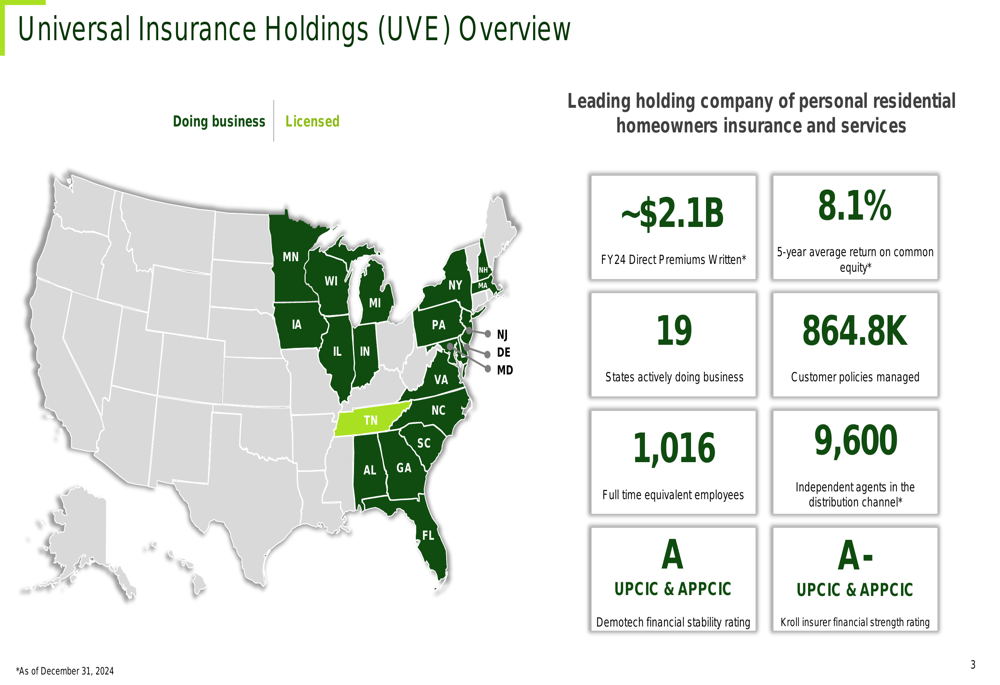
Quarterly Performance Highlights
Universal Insurance’s Q1 2025 financial results demonstrated solid performance across key metrics. The company reported diluted GAAP earnings per share of $1.44, achieving an annualized return on average common equity (ROCE) of 41.7%. Direct premiums written reached $467.1 million, representing a 4.7% increase from the prior year quarter.
Book value per share grew to $14.98, an impressive 18.1% year-over-year increase, while adjusted book value per share rose to $16.79, up 9.5% year-over-year. These results align with the company’s strategic focus on disciplined growth and earnings stability.
The detailed Q1 2025 financial highlights are presented in the following slide:
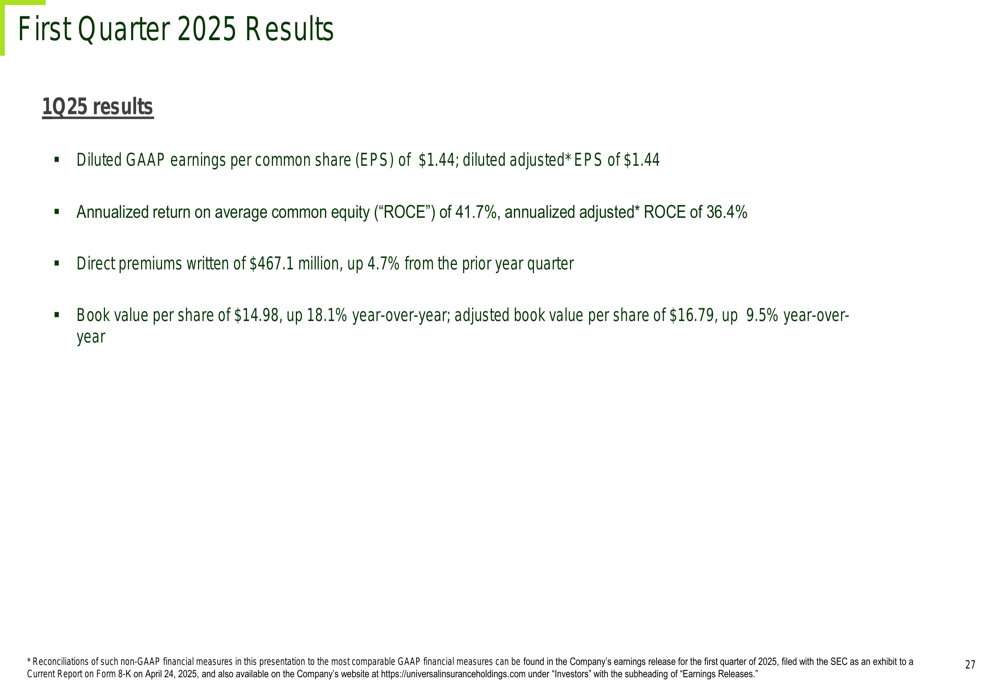
The company’s long-term performance shows a consistent upward trajectory in both book value per share and cumulative dividends. From fiscal year 2014 to 2024, Universal has achieved a compound annual growth rate of 12.7% in these combined metrics, demonstrating its commitment to shareholder value creation:
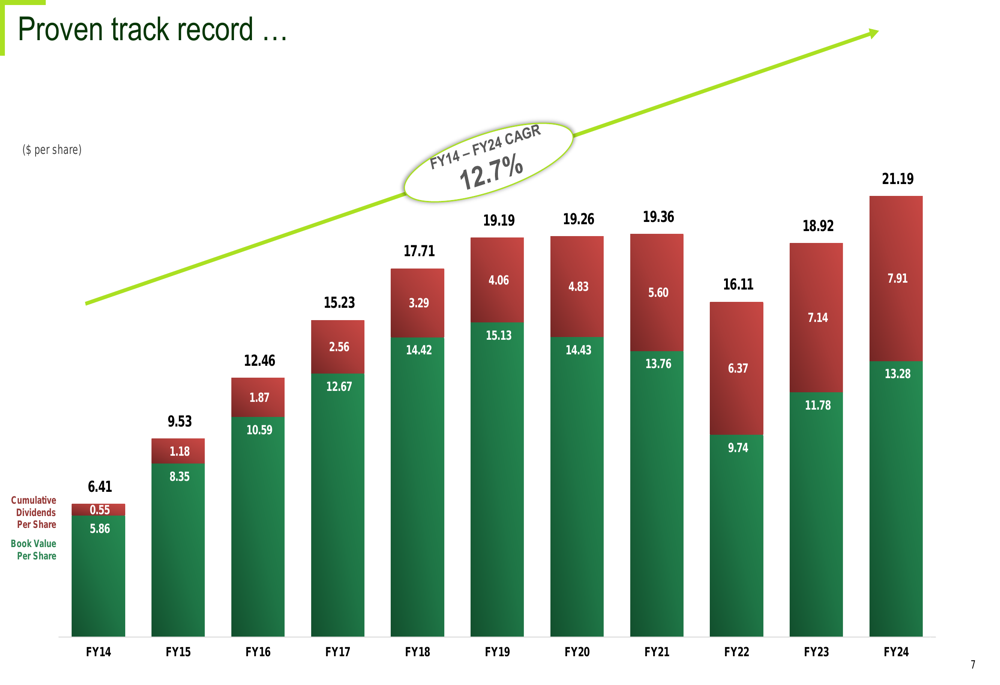
Strategic Initiatives
Universal Insurance continues to execute on its multi-year strategic priorities, focusing on disciplined growth, maintaining a resilient balance sheet, and enhancing customer service. The company’s geographic expansion strategy has been a key driver of its diversification efforts, with operations now spanning 19 states.
The homeowners multi-peril insurance market presents significant opportunities for growth, with industry-wide direct premiums written increasing from $104.3 billion in 2019 to $173.0 billion in 2024. Florida, Universal’s primary market, represents 21.3% of this addressable market as of 2024:
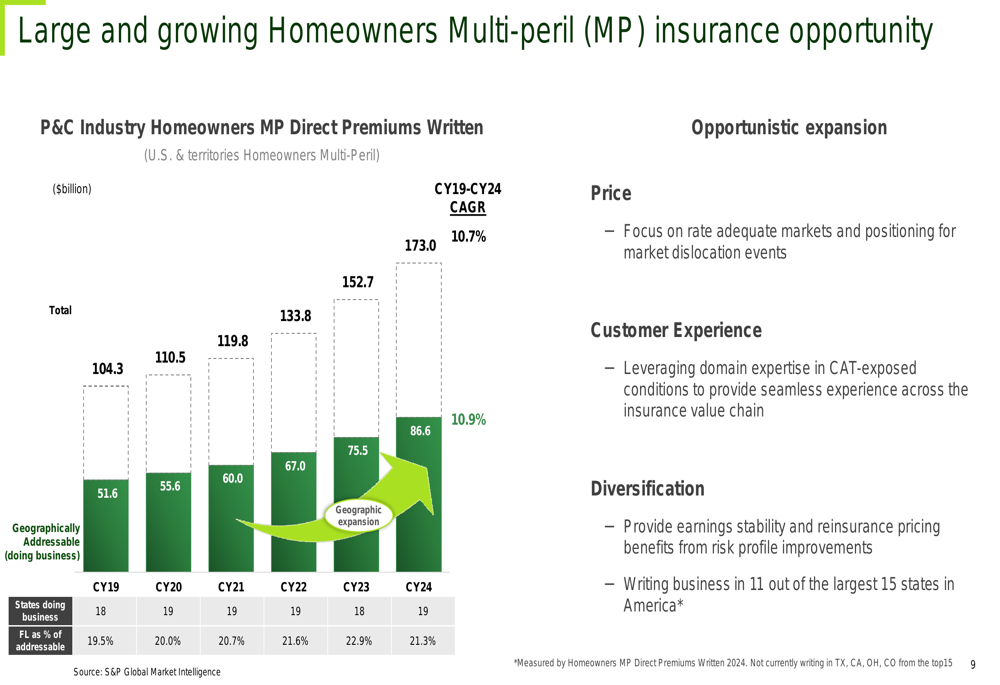
Universal’s policies in force, premiums in force, and total insured value have shown notable growth and diversification. By the end of fiscal year 2024, the company had 855,500 policies in force, with 34% coming from states outside Florida. Similarly, premiums in force reached $2.079 billion, with 23% from non-Florida states, while total insured value grew to $358.5 billion, with 48% from outside Florida:
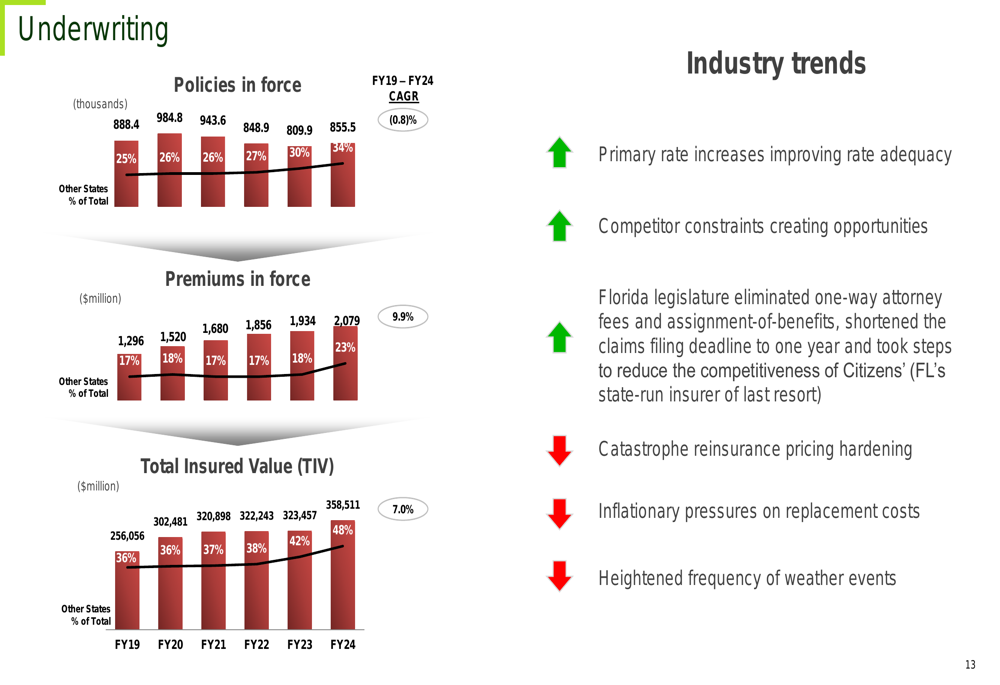
The company’s risk management strategy includes a comprehensive reinsurance program structured in layers to provide protection against multiple catastrophic events. This approach is crucial for maintaining financial stability, particularly given Universal’s significant presence in hurricane-prone regions:
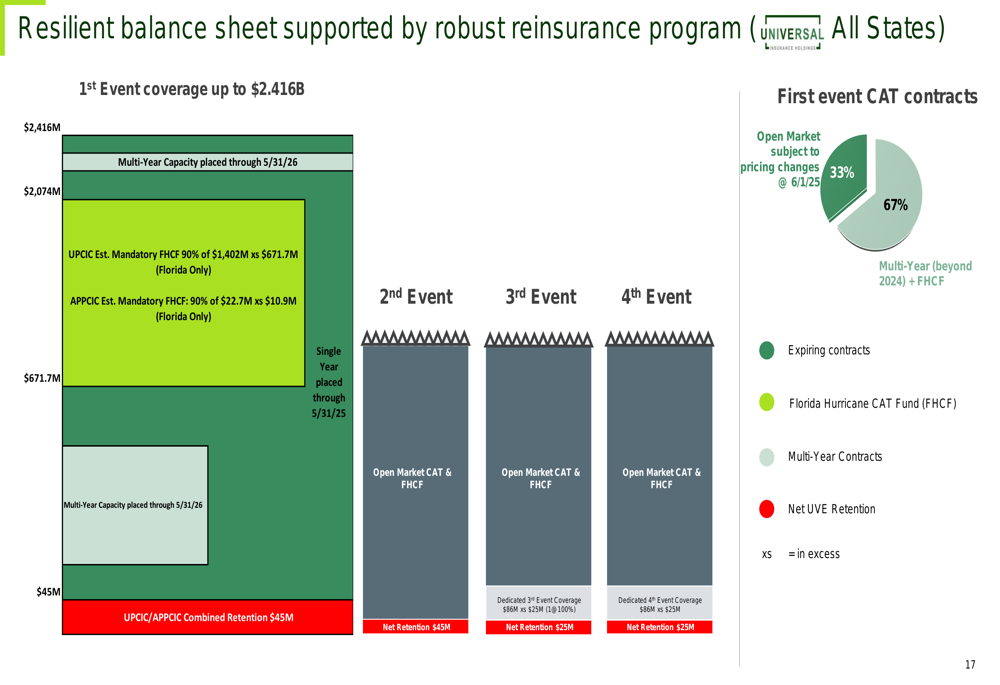
Investment Portfolio & Capital Deployment
Universal Insurance maintains a conservative investment portfolio primarily focused on fixed income securities. As of the presentation date, the portfolio had an effective maturity of 4.0 years and an average rating of A+. Corporate bonds represent the largest allocation at 63.1% of the portfolio, followed by mortgage-backed and asset-backed securities at 26.4%.
The company’s net investment income has shown significant growth in recent years, increasing from $12.5 million in fiscal year 2021 to $59.1 million in fiscal year 2024. This growth has contributed to the company’s overall financial performance and ability to return value to shareholders.
The investment portfolio breakdown is illustrated in the following slide:
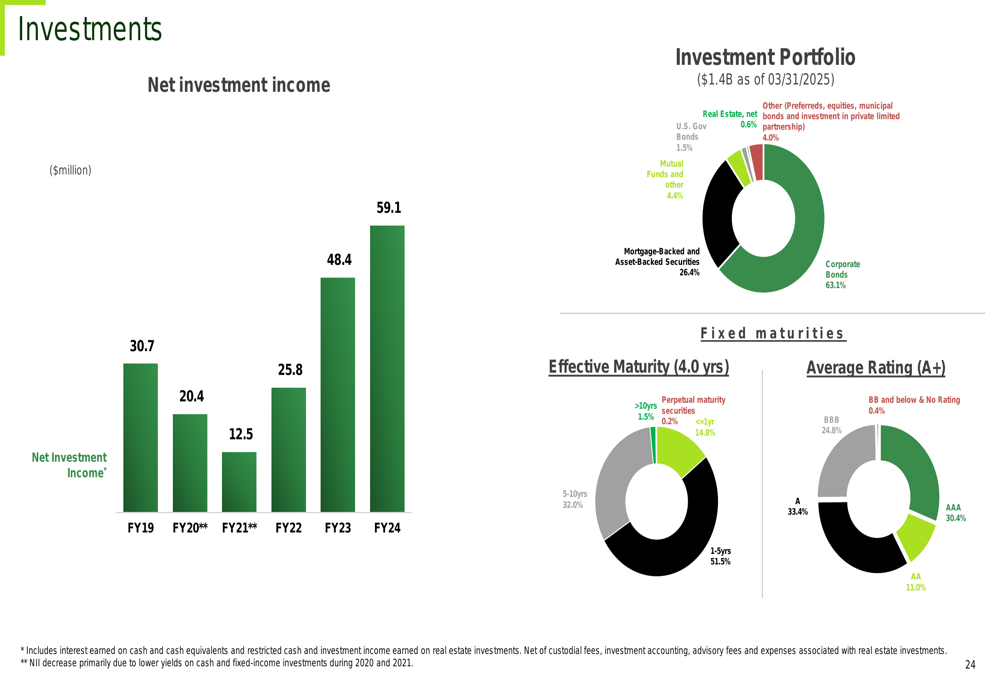
Regarding capital deployment, Universal has generated $760 million in free cash flow over the past five years. The majority of this capital ($549 million) has been allocated to strengthening the balance sheet, with $118 million distributed as dividends, $86 million used for share repurchases, and $7 million for debt repayment. This conservative approach to capital allocation aligns with the company’s focus on maintaining financial resilience.
Forward-Looking Statements
Looking ahead, Universal Insurance is focused on profitable growth in a market environment that appears to be stabilizing, particularly in Florida. The company anticipates favorable reinsurance market conditions, which could positively impact its cost structure and profitability.
Industry trends highlighted in the presentation include primary rate increases improving rate adequacy, competitor constraints creating opportunities, the elimination of one-way attorney fees through legislative action, and hardening catastrophe reinsurance pricing. These factors, combined with Universal’s strategic initiatives, position the company to potentially capitalize on market opportunities while managing risks effectively.
According to the earnings call transcript, CEO Steve Donaghy emphasized the company’s "laser focus on profitability and managing the overall book of business," while CFO Frank Wilcox highlighted their "conservative approach to financial management." This cautious yet opportunistic strategy appears to be yielding positive results, as evidenced by the company’s performance in the first quarter of 2025.
With a current stock price of $23.63 (as of April 25, 2025) and trading near its 52-week high of $25.64, Universal Insurance continues to demonstrate resilience in a challenging insurance market. The company’s commitment to geographic diversification, risk management, and shareholder value creation provides a solid foundation for potential future growth.
Full presentation:
This article was generated with the support of AI and reviewed by an editor. For more information see our T&C.
